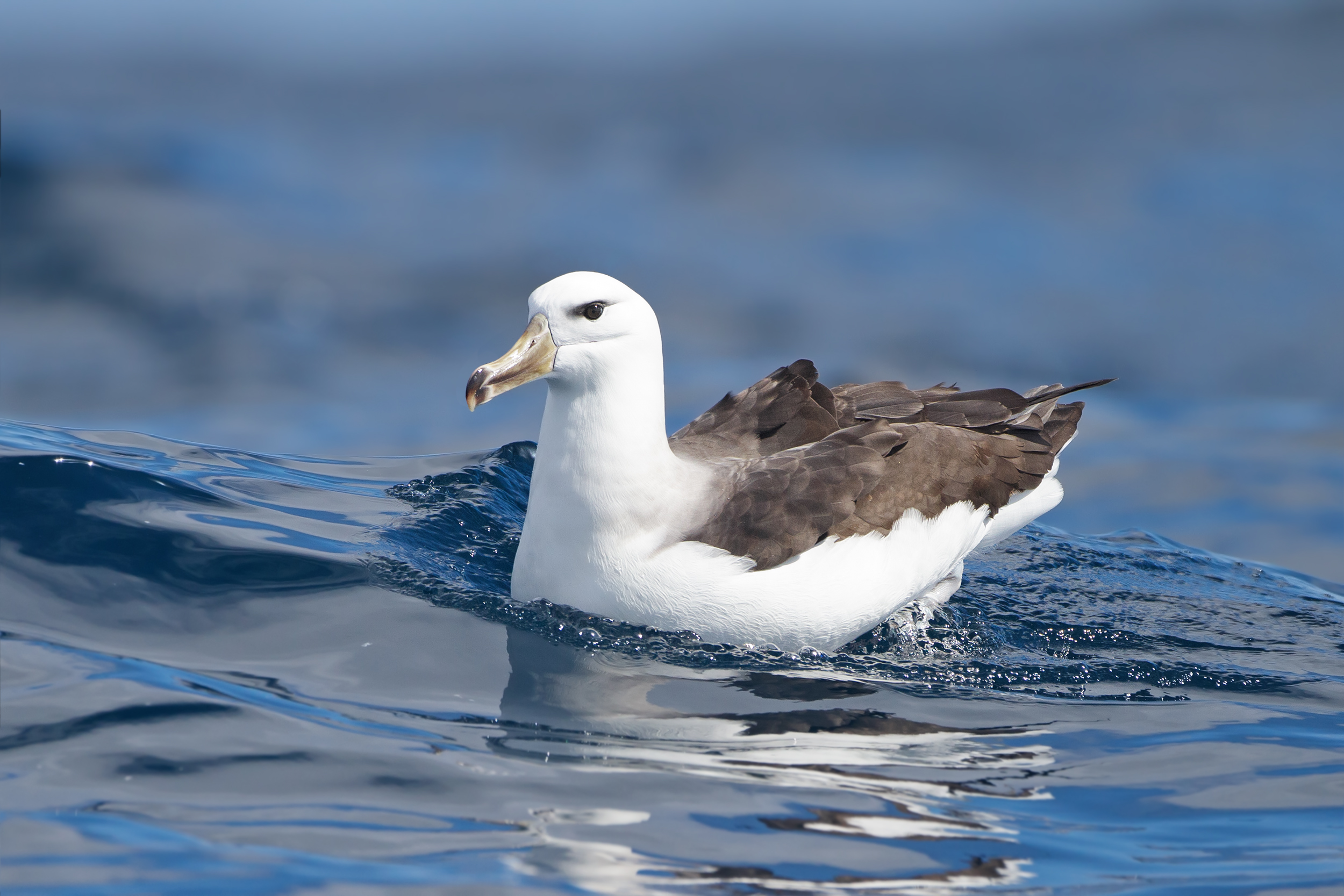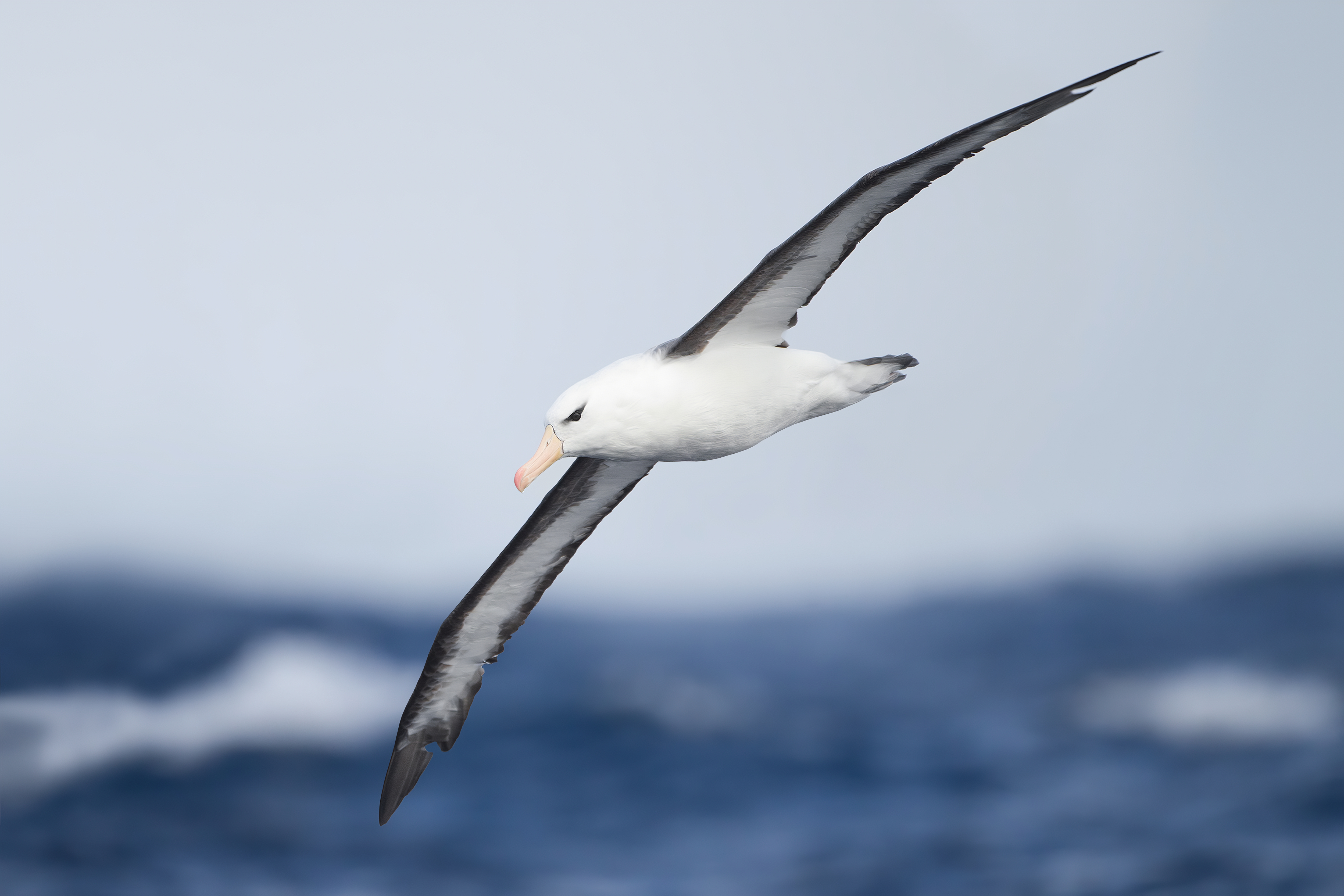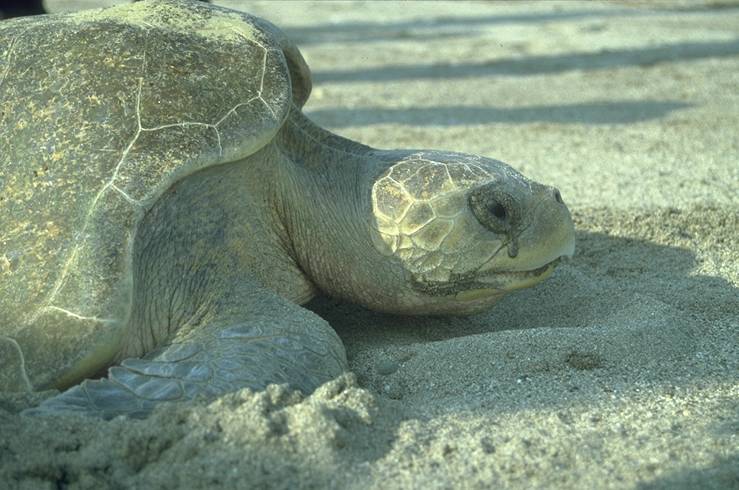|
Mollymawk
The mollymawks are a group of medium-sized albatrosses that form the genus ''Thalassarche''. The name has sometimes been used for the genus ''Phoebetria'' as well, but these are usually called sooty albatrosses. They are restricted to the Southern Hemisphere, where they are the most common of the albatrosses. They were long considered to be in the same genus as the great albatrosses, ''Diomedea'', but a study of their mitochondrial DNA showed that they are a monophyletic taxon related to the sooty albatrosses, and they were placed in their own genus. Taxonomy The genus ''Thalassarche'' was introduced in 1853 by the German naturalist Ludwig Reichenbach with the black-browed albatross as the type species. The genus name combines the Ancient Greek ''thalassa'' meaning "sea" and ''arkhē'' meaning "power" or "command" (from ''arkhō'', to govern). The word ''mollymawk'', which dates to the late 17th century, comes from the Dutch ''mallemok'', which means ''mal'' – foolish and ''m ... [...More Info...] [...Related Items...] OR: [Wikipedia] [Google] [Baidu] |
Albatross
Albatrosses, of the biological family Diomedeidae, are large seabirds related to the procellariids, storm petrels, and diving petrels in the order Procellariiformes (the tubenoses). They range widely in the Southern Ocean and the North Pacific. They are absent from the North Atlantic, although fossil remains show they once occurred there and occasional vagrants are found. Albatrosses are among the largest of flying birds, and species of the genus ''Diomedea'' (great albatrosses) have the longest wingspans of any extant birds, reaching up to . The albatrosses are usually regarded as falling into four genera, but disagreement exists over the number of species. Albatrosses are highly efficient in the air, using dynamic soaring and slope soaring to cover great distances with little exertion. They feed on squid, fish, and krill by either scavenging, surface seizing, or diving. Albatrosses are colonial, nesting for the most part on remote oceanic islands, often with several spe ... [...More Info...] [...Related Items...] OR: [Wikipedia] [Google] [Baidu] |
Diomedeidae
Albatrosses, of the biological family Diomedeidae, are large seabirds related to the procellariids, storm petrels, and diving petrels in the order Procellariiformes (the tubenoses). They range widely in the Southern Ocean and the North Pacific. They are absent from the North Atlantic, although fossil remains show they once occurred there and occasional vagrants are found. Albatrosses are among the largest of flying birds, and species of the genus ''Diomedea'' (great albatrosses) have the longest wingspans of any extant birds, reaching up to . The albatrosses are usually regarded as falling into four genera, but disagreement exists over the number of species. Albatrosses are highly efficient in the air, using dynamic soaring and slope soaring to cover great distances with little exertion. They feed on squid, fish, and krill by either scavenging, surface seizing, or diving. Albatrosses are colonial, nesting for the most part on remote oceanic islands, often with several specie ... [...More Info...] [...Related Items...] OR: [Wikipedia] [Google] [Baidu] |
Thalassarche Cauta
The shy albatross, also known as shy mollymawk, (''Thalassarche cauta'', formerly ''Diomedea cauta''), is a medium-sized albatross that breeds on three remote islands off the coast of Tasmania, Australia, in the southern Indian Ocean. Its lifespan is about 60 years, and it has been seen as far afield as South Africa and the Pacific coast of the United States. , the species is listed as "Endangered" in Australia; there are thought to be 15,000 pairs of shy albatross left. It is Australia's only endemic albatross. Some authorities call this species the white-capped albatross, but the White-capped albatross is generally the common name given to ''Thalassarche cauta steadi''. Taxonomy This mollymawk was once considered to be the same species as the Salvin's albatross, ''Thalassarche salvini'' and the Chatham albatross, ''Thalassarche eremita'', but they were split around 2004. In 1998, Robertson and Nunn suggested a four-way split including the white-capped albatross, ... [...More Info...] [...Related Items...] OR: [Wikipedia] [Google] [Baidu] |
Black-browed Albatross
The black-browed albatross (''Thalassarche melanophris''), also known as the black-browed mollymawk,Robertson, C. J. R. (2003) is a large seabird of the albatross family Diomedeidae; it is the most widespread and common member of its family. Taxonomy Mollymawks are albatrosses in the family Diomedeidae and order Procellariiformes, which also includes shearwaters, fulmars, storm petrels, and diving petrels. These birds share certain identifying features. They have nasal passages that attach to the upper bill called naricorns, although the nostrils on the albatross are on the sides of the bill. The bills of Procellariiformes are also unique in that they are split into between seven and nine horny plates. They produce a stomach oil made up of wax esters and triglycerides that is stored in the proventriculus. This is used against predators as well as being an energy-rich food source for chicks and also for the adults during their long flights. The albatross also has a salt gland a ... [...More Info...] [...Related Items...] OR: [Wikipedia] [Google] [Baidu] |
Black-browed Albatross
The black-browed albatross (''Thalassarche melanophris''), also known as the black-browed mollymawk,Robertson, C. J. R. (2003) is a large seabird of the albatross family Diomedeidae; it is the most widespread and common member of its family. Taxonomy Mollymawks are albatrosses in the family Diomedeidae and order Procellariiformes, which also includes shearwaters, fulmars, storm petrels, and diving petrels. These birds share certain identifying features. They have nasal passages that attach to the upper bill called naricorns, although the nostrils on the albatross are on the sides of the bill. The bills of Procellariiformes are also unique in that they are split into between seven and nine horny plates. They produce a stomach oil made up of wax esters and triglycerides that is stored in the proventriculus. This is used against predators as well as being an energy-rich food source for chicks and also for the adults during their long flights. The albatross also has a salt gland a ... [...More Info...] [...Related Items...] OR: [Wikipedia] [Google] [Baidu] |
Phoebetria
The sooty albatrosses are small albatrosses from the genus ''Phoebetria''. There are two species, the sooty albatross, ''Phoebetria fusca'', and the light-mantled albatross, ''Phoebetria palpebrata''. Systematics The sooties have long been considered distinct from the rest of the other albatrosses, and have retained their generic status through the many revisions of the family over the last 150 years. They have traditionally been thought of as primitive, sharing some morphological features with the other petrel families. However, molecular work examining the mitochondrial DNA has shown that the taxon is related to the mollymawks, and that the two taxa are distinct from the great albatrosses and the North Pacific albatrosses. Description Both have distinctive blackish plumage over the head, wings and bellies. The sooty albatross has a dark back and mantle as well, whereas the light-mantled has an ashy-grey mantle, back and rump. The two species can also be told apart by the nar ... [...More Info...] [...Related Items...] OR: [Wikipedia] [Google] [Baidu] |
Great Albatross
The great albatrosses are seabirds in the genus ''Diomedea'' in the albatross family. The genus ''Diomedea'' formerly included all albatrosses except the sooty albatrosses, but in 1996 the genus was split, with the mollymawks and the North Pacific albatrosses both being elevated to separate genera. The great albatrosses themselves form two species complexes, the wandering and Amsterdam albatrosses, and the royal albatrosses. The splitting of the great albatrosses into six or seven species has been accepted by most, though not all, authorities. Description The wandering albatross and the southern royal albatross are the largest of the albatrosses and are among the largest of flying birds. They have the largest wingspans of any bird, being up to from tip to tip, although the average is a little over . Large adult males of these two species may exceed in weight, as heavy as a large swan. The great albatrosses are predominantly white in plumage as adults, with birds becomi ... [...More Info...] [...Related Items...] OR: [Wikipedia] [Google] [Baidu] |
Salt Gland
The salt gland is an organ for excreting excess salts. It is found in the cartilaginous fishes subclass elasmobranchii (sharks, rays, and skates), seabirds, and some reptiles. Salt glands can be found in the rectum of sharks. Birds and reptiles have salt glands located in or on the skull, usually in the eyes, nose, or mouth. These glands are lobed containing many secretory tubules which radiate outward from the excretory canal at the center. Secretory tubules are lined with a single layer of epithelial cells. The diameter and length of these glands vary depending on the salt uptake of the species. Salt glands maintain salt balance and allow marine vertebrates to drink seawater. Active transport via sodium–potassium pump, found on the basolateral membrane, moves salt from the blood into the gland, where it is excreted as a concentrated solution. In birds The avian salt gland has two main ducts which are a medial and a lateral. Salt gland activations occurs from increased o ... [...More Info...] [...Related Items...] OR: [Wikipedia] [Google] [Baidu] |
Fulmar
The fulmars are tubenosed seabirds of the family Procellariidae. The family consists of two extant species and two extinct fossil species from the Miocene. Fulmars superficially resemble gulls, but are readily distinguished by their flight on stiff wings, and their tube noses. They breed on cliffs, laying one or rarely two eggs on a ledge of bare rock or on a grassy cliff. Outside the breeding season, they are pelagic, feeding on fish, squid and shrimp in the open ocean. They are long-lived for birds, living for up to 40 years. Historically, the northern fulmar lived on the Isle of St Kilda, where it was extensively hunted. The species has expanded its breeding range southwards to the coasts of England and northern France. Taxonomy The genus ''Fulmarus'' was introduced in 1826 by the English naturalist James Stephens. The name comes from the Old Norse ''Fúlmár'' meaning "foul-mew" or "foul-gull" because of the birds' habit of ejecting a foul-smelling oil. The type species ... [...More Info...] [...Related Items...] OR: [Wikipedia] [Google] [Baidu] |
Diving-petrel
The diving petrels form a genus, ''Pelecanoides'', of seabirds in the family Procellariidae. There are four very similar species of diving petrels, distinguished only by small differences in the coloration of their plumage, habitat, and bill construction. They are only found in the southern hemisphere. The diving petrels were formerly placed in their own family, the Pelecanoididae. Diving petrels are auk-like small petrels of the southern oceans. The resemblances with the auks are due to convergent evolution, since both families feed by pursuit diving, although some researchers have in the past suggested that the similarities are due to relatedness. Among the Procellariiformes the diving petrels are the family most adapted to life in the sea rather than flying over it, and are generally found closer inshore than other families in the order. Taxonomy The genus ''Pelecanoides'' was introduced in 1799 by the French naturalist Bernard Germain de Lacépède for the common diving petre ... [...More Info...] [...Related Items...] OR: [Wikipedia] [Google] [Baidu] |
Naricorns
A nostril (or naris , plural ''nares'' ) is either of the two orifices of the nose. They enable the entry and exit of air and other gasses through the nasal cavities. In birds and mammals, they contain branched bones or cartilages called turbinates, whose function is to warm air on inhalation and remove moisture on exhalation. Fish do not breathe through noses, but they do have two (but cyclostomes have merged into one) small holes used for smelling, which can also be referred to as nostrils. In humans, the nasal cycle is the normal ultradian cycle of each nostril's blood vessels becoming engorged in swelling, then shrinking. The nostrils are separated by the septum. The septum can sometimes be deviated, causing one nostril to appear larger than the other. With extreme damage to the septum and columella, the two nostrils are no longer separated and form a single larger external opening. Like other tetrapods, humans have two external nostrils (anterior nares) and two additi ... [...More Info...] [...Related Items...] OR: [Wikipedia] [Google] [Baidu] |
Wax Ester
A wax ester (WE) is an ester of a fatty acid and a fatty alcohol. Wax esters comprise the main components of three commercially important waxes: carnauba wax, candelilla wax, and beeswax.. Wax esters are formed by combining one fatty acid with one fatty alcohol: :RCOOH + R'OH RCOOR' + H2O Various types of wax esters exist. Some are saturated, and others contain unsaturated centers. Saturated wax esters have higher melting points and are more likely to be solid at room temperature. Unsaturated wax esters have a lower melting point and are more likely to be liquid at room temperature. Both fatty acids and fatty alcohols may be made of different carbon chain length. In the end, there are many different possible combinations of fatty acids and fatty alcohols and each combination will have a unique set of properties in terms of steric orientation and phase transition. The chain lengths of fatty acids and fatty alcohols in naturally occurring wax esters vary. The fatty acids in wa ... [...More Info...] [...Related Items...] OR: [Wikipedia] [Google] [Baidu] |







_heads.jpg)



